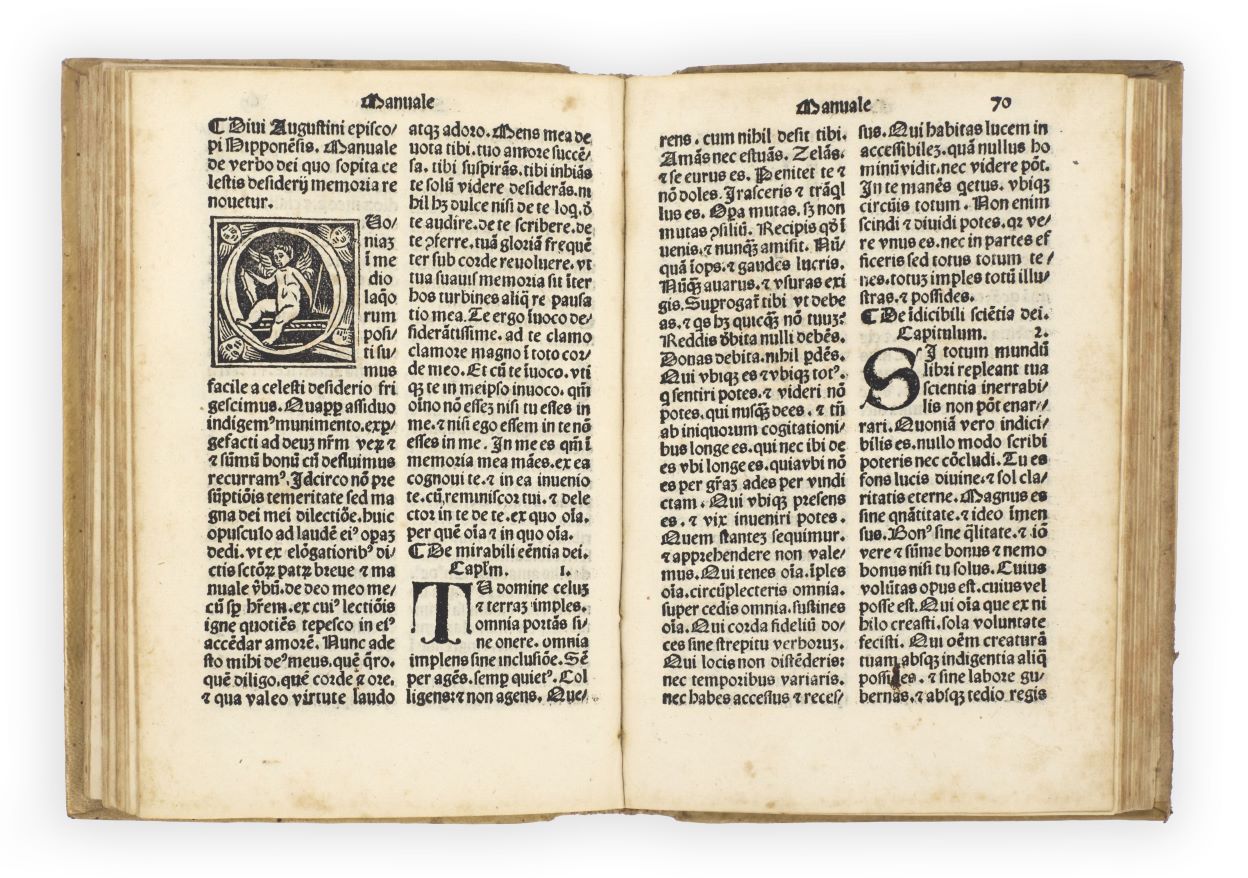

FIRST IMPORTANT TRAVEL BOOK ON SICILY AND A CHALLENGE TO USSHER’S DATING OF CREATION
BRYDONE, Patrick.
Voyage en Sicile et à Malthe, traduit de l’anglois de M. Brydone, membre de la Société Royale des Sciences de Londres, par M. Demeunier. Edition soigneusement corrigée sur la seconde édition angloise, par M. B. P. A. N. Augmentée de notes intéressantes, par M. Derveil, et de quelques autres pieces importantes …
Neuchâtel, au magasin de la Société Typographique, 1776.
2 vols, 8vo, pp. v [i.e. 8], 301, [1 (blank)], with engraved view of Mount Etna bound before p. 1; [2], 272; head- and tail-pieces; a few light marks, occasional light foxing; very good in somewhat later patterned calf, spines in compartments with gilt red and green morocco lettering- and numbering-pieces, marbled endpapers; slightly rubbed.

Added to your basket:
Voyage en Sicile et à Malthe, traduit de l’anglois de M. Brydone, membre de la Société Royale des Sciences de Londres, par M. Demeunier. Edition soigneusement corrigée sur la seconde édition angloise, par M. B. P. A. N. Augmentée de notes intéressantes, par M. Derveil, et de quelques autres pieces importantes …
Attractive edition of Brydone’s A tour through Sicily and Malta (1773) in the French translation of Jean-Nicolas Démeunier (1751–1814), ‘one of the most successful works on Italian travel in the eighteenth century and … the first important book on Sicily’ (Pine-Coffin).
After studying at St Andrews, Brydone (1736–1818) conducted electrical experiments in Switzerland before becoming tutor and travelling companion to William Beckford in 1768. ‘During the summer of 1770 he travelled from Naples to Sicily and Malta in the company of the seventeen-year-old William Fullarton (later colonel and commissioner of Trinidad), a friend named Glover, and several servants. At this time Sicily was virtually unknown to British travellers … The work met with critical acclaim and the vulcanological and electrical observations it contained earned Brydone election to the Royal Society in either 1772 or 1773’ (ODNB).
Samuel Johnson’s admiration for the work was tempered by his disapproval of the challenge that Brydone’s vulcanological writing posed to Ussher’s dating of creation: ‘in the offending passage in the Tour Brydone reports and enlarges upon the work of one Signor Recupero, a Sicilian priest who wrote upon the natural history of Etna … “the eruption that formed the lowest of these lavas … must have flowed from the mountain at least 14,000 years ago. Recupero tells me he is exceedingly embarrassed, by these discoveries, in writing the history of the mountain.—That Moses hangs like a dead weight upon him, and blunts all his zeal for inquiry; for that really he has not the conscience to make his mountain so young, as the prophet makes the world” … but the radical implications of Brydone’s vulcanology were not developed either by himself or by his contemporaries: it was only with Charles Lyell’s Principles of Geology (1830–33) that James Ussher’s (1654) dating of creation to 4004 BC began to be seriously questioned’ (ibid.).
Cf. Rochedieu, Bibliography of French translations of English works 1700-1800, p. 37.

